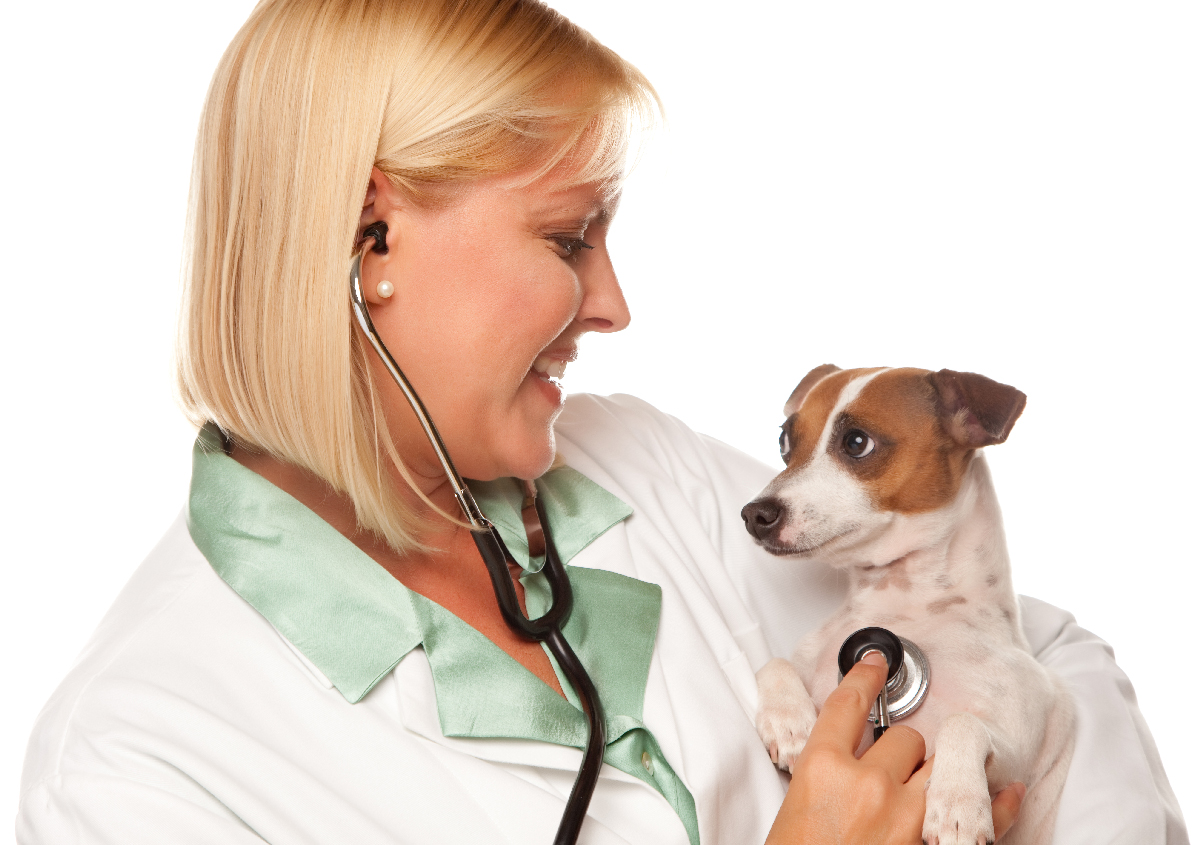What Vets Look For During an Ultrasound For Dogs Exam}
What You Need to Learn About Vet Solutions: A Summary of Diagnostic Devices and Procedures
Veterinary services play a vital function in maintaining the wellness of animals. Normal examinations can expose surprise wellness issues early on. Numerous diagnostic devices and procedures, such as blood tests and imaging techniques, give necessary insights into a pet's health. Understanding these techniques is key for animal proprietors. What particular analysis treatments are most typically used, and exactly how can they influence an animal's treatment plan?
Importance of Regular Veterinary Examinations
While several pet proprietors might ignore the significance of routine veterinary examinations, these appointments are essential for keeping an animal's overall health and wellness. Routine sees to the vet permit very early discovery of prospective health concerns prior to they intensify into significant problems. Normal check-ups frequently consist of inoculations, which are crucial for avoiding infectious illness that might drastically affect a family pet's well-being. In addition, these appointments provide a possibility for veterinarians to assess the animal's weight, oral health and wellness, and overall problem, making certain that the pet dog is growing. During these gos to, family pet proprietors can also get beneficial advice on diet regimen, exercise, and preventive care tailored to their specific pet's requirements.
Common Analysis Treatments in Vet Medication
In vet medication, exact medical diagnosis is essential for reliable therapy. Usual diagnostic treatments consist of blood testing techniques, progressed imaging innovations, and urinalysis, each playing a significant duty in recognizing health and wellness problems. Recognizing these techniques improves the capacity to provide proper treatment for animal people.
Blood Testing Techniques
Blood testing techniques work as necessary diagnostic devices in veterinary medicine, enabling veterinarians to analyze the wellness of pets accurately. These techniques include collecting blood samples to examine numerous elements, such as red and white blood cells, platelets, and biochemical pens. Common tests include total blood matters (CBC), which evaluate overall health and discover infections, and biochemical panels, which assess body organ function and metabolic condition. Additionally, serological tests can identify specific conditions with antibody detection. Blood screening is minimally intrusive and provides important details that aids in diagnosing conditions, keeping track of wellness status, and reviewing responses to treatments. On the whole, these techniques play an essential function in guaranteeing excellent look after family pets and livestock alike.
Imaging Technologies Made Use Of
Analysis imaging modern technologies are important devices in veterinary medicine, complementing blood screening strategies by providing aesthetic understandings into a pet's inner frameworks. Typical imaging modalities include X-rays, which serve for evaluating bone fractures and detecting international objects, and ultrasound, which enables real-time visualization of soft tissues and body organs. Magnetic resonance imaging (MRI) provides detailed photos of complex physiological areas, specifically in neurological assessments. Computed tomography (CT) provides cross-sectional images, enhancing analysis precision for different conditions. Each of these innovations aids vets in identifying health problems, preparing treatments, and monitoring recuperation. By integrating imaging innovations, vet specialists can much better examine an animal's health and make educated choices regarding their care.
Urinalysis and Diagnostics
Urinalysis functions as an important analysis tool in vet medicine, providing beneficial understandings into a pet's general health and wellness and aiding in the detection of different conditions. This non-invasive procedure examines pee samples to assess kidney function, hydration standing, and metabolic conditions. Typical components checked out include certain gravity, pH levels, sugar, proteins, and the visibility of blood or germs. Unusual findings can suggest concerns such as urinary tract infections, diabetic issues mellitus, or kidney condition. To enhance analysis accuracy, urinalysis is frequently executed together with various other tests, such as blood work and imaging research studies. Early discovery through urinalysis can bring about prompt treatments, enhancing the diagnosis for many vet clients. It is an important facet of thorough veterinary treatment.
Understanding Blood Tests and Research Laboratory Analysis
Recognizing blood tests and lab evaluation is vital in veterinary medication as it assists in diagnosing different health and wellness conditions in animals. Various sorts of blood tests offer important info concerning a pet's internal state, while translating laboratory results needs cautious factor to consider of various variables. This area will explore the kinds of blood examinations available and the importance of their results.
Types of Blood Examinations
Blood examinations play an essential function in vet medication, providing vital understandings right into an animal's health and wellness standing. Numerous kinds of blood examinations are made use of, each offering various purposes. Full blood matters (CBC) evaluate general health and wellness and discover conditions such as anemia or infection. Biochemical profiles examine organ function by measuring enzymes and electrolytes, providing understandings into metabolic health and wellness. Serological examinations recognize certain antibodies or virus, helping in the diagnosis of infections or autoimmune conditions. Blood keying warranties risk-free transfusions, while coagulation tests gauge the blood's capability to embolisms, essential for procedures. These tests collectively boost medical diagnosis, treatment planning, and tracking of an animal's wellness, highlighting the value of complete lab analysis in vet care.

Analyzing Laboratory Outcomes
An extensive evaluation of laboratory outcomes is essential for precise diagnosis and treatment in veterinary medicine. Translating laboratory results needs an understanding of regular referral ranges and the relevance of inconsistencies. Blood examinations can disclose numerous health signs, such as organ feature, electrolyte equilibrium, and the existence of infections. Vets need to consider the whole clinical image, including the animal's background, checkup searchings for, and any signs presented. Variations in results might emerge from variables such as age, type, and underlying wellness conditions. Lab results should not be watched in seclusion but instead as component of an all-inclusive diagnostic strategy. Exact analysis enables for tailored therapy plans and better outcomes for vet individuals.
Imaging Techniques: X-rays, Ultrasounds, and Beyond
Imaging methods are important tools in vet medicine, giving essential insights right into the wellness and well-being of animals. Among one of the most generally utilized methods are Ultrasounds and x-rays. X-rays are vital for picturing bone structures, assisting veterinarians identify fractures, tumors, or foreign items. This approach is non-invasive and quick, making it perfect for immediate situations.Ultrasounds, on the various other hand, use sound waves to develop pictures of soft cells and organs. This method is particularly valuable for examining the heart, abdominal area, and reproductive body organs, enabling vets to analyze problems like fluid accumulation or body organ abnormalities.Beyond X-rays and ultrasounds, advanced imaging strategies such as computed tomography (CT) and magnetic resonance imaging (MRI) are significantly utilized in veterinary method. These methods use detailed cross-sectional pictures, improving the precision of diagnoses and therapy strategies. CT Scans For Animals. Overall, imaging methods play an important function in guaranteeing efficient veterinary treatment
The Duty of Biopsies in Diagnosing Pet Health Issues
Precision in detecting health issues in family pets typically depends upon the usage of biopsies, which provide conclusive info regarding cells problems. discover this A biopsy involves the removal of a small sample of tissue for exam under a microscope, allowing veterinarians to identify various conditions, including infections, growths, and inflammatory illness. This diagnostic device is vital for identifying between benign and malignant growths, directing therapy choices, and evaluating the severity of a condition.Biopsies can be performed utilizing various strategies, such as needle aspiration, incisional biopsies, or excisional biopsies, depending on the area and type of tissue involved. The selection of approach might influence recuperation time and the quantity of cells gathered. Eventually, the information gleaned from a biopsy can result in targeted therapies, improving outcomes for pet dogs encountering severe health difficulties. Vets highlight the value of this procedure in attaining precise diagnoses and reliable therapy plans.
Advanced Diagnostic Equipment: Endoscopy and CT Scans

Advanced diagnostic tools, such as endoscopy and CT scans, play a necessary duty in contemporary vet medicine, offering non-invasive methods to picture internal structures and detect various conditions in family pets. Endoscopy involves using an adaptable tube geared up with a video camera, enabling veterinarians to analyze the stomach system and breathing system straight. This strategy can reveal irregularities such as growths, international bodies, or swelling, enabling targeted treatment plans.CT scans, on the various other hand, make use of advanced imaging innovation to develop thorough cross-sectional pictures of the body (CT Scans For Animals). This approach is specifically useful for assessing complex frameworks like the mind, back, and joints. By providing high-resolution images, CT scans help vets link in recognizing concerns that might not appear through standard radiography. With each other, these innovative devices boost analysis precision, boost therapy end results, and inevitably add to better overall pet health administration

Interpreting Examination Results: What Family Pet Owners Need To Know
Recognizing test outcomes can be a challenging task for pet proprietors, especially after advanced treatments like endoscopy and CT scans have been carried out. Translating these outcomes requires a grasp of clinical terms and a clear understanding of what the findings show about the family pet's wellness. Veterinarians frequently give explanations, however the intricacy of the results can still result in confusion.Pet proprietors should actively participate in conversations with their veterinarians, asking concerns to make clear any unpredictabilities. It is important to recognize normal versus irregular outcomes and the ramifications for the pet dog's therapy plan. Additionally, acknowledging that some outcomes might require further testing or tracking can aid proprietors remain informed about their animal's health and wellness trip. Inevitably, a joint approach between animal proprietors and vet experts promotes much better health and wellness end results and boosts the total treatment experience for pet dogs.
Frequently Asked Concerns
Exactly how Do I Choose the Right Veterinary Clinic for My Pet?
Choosing the best veterinary clinic involves researching neighborhood choices, reviewing certifications, seeing facilities, and analyzing staff interactions (Cancer Veterinary Near Me). Prioritizing suggestions from relied on sources can assist assure the very best treatment and setting for an animal's wellness requirements
What Should I Do if My Pet Refuses to head to the Veterinarian?
When a pet dog declines to go to the vet, it's advisable to continue to be calm, use treats or playthings to attract them, and take into consideration arranging a home visit if stress and anxiety continues. Perseverance and positive support are vital.
Are There Telehealth Options for Vet Services?
Telehealth alternatives for veterinary services are progressively offered, enabling animal owners to speak with vets remotely. These solutions enable discussions regarding health and wellness problems, advice site web on small conditions, and follow-ups without requiring to go to a center.
Exactly how Often Should My Pet Have Dental Examinations?
The regularity of oral exams for pets commonly relies on their age and type. Typically, veterinarians advise yearly oral evaluations, although some pet dogs may require even more frequent brows through to preserve suitable oral health and wellness.

What Are the Costs Associated With Vet Diagnostics?
The costs related to vet diagnostics can differ widely, usually varying from standard examinations like blood work to sophisticated imaging methods. Aspects affecting costs include the facility's area, equipment used, and particular examinations required for each family pet. Veterinary services play a vital function in keeping the health and wellness of pets. While many pet owners might undervalue the value of regular vet exams, these consultations are important for maintaining an animal's overall health. Furthermore, these appointments offer an opportunity for veterinarians to analyze the animal's weight, oral wellness, and overall condition, guaranteeing that the pet is flourishing. Precision in detecting health and wellness problems in family pets commonly hinges on the usage of biopsies, which give clear-cut info concerning cells abnormalities. In addition, recognizing that some outcomes may require further screening or tracking can help owners remain notified regarding their family pet's health and wellness journey.